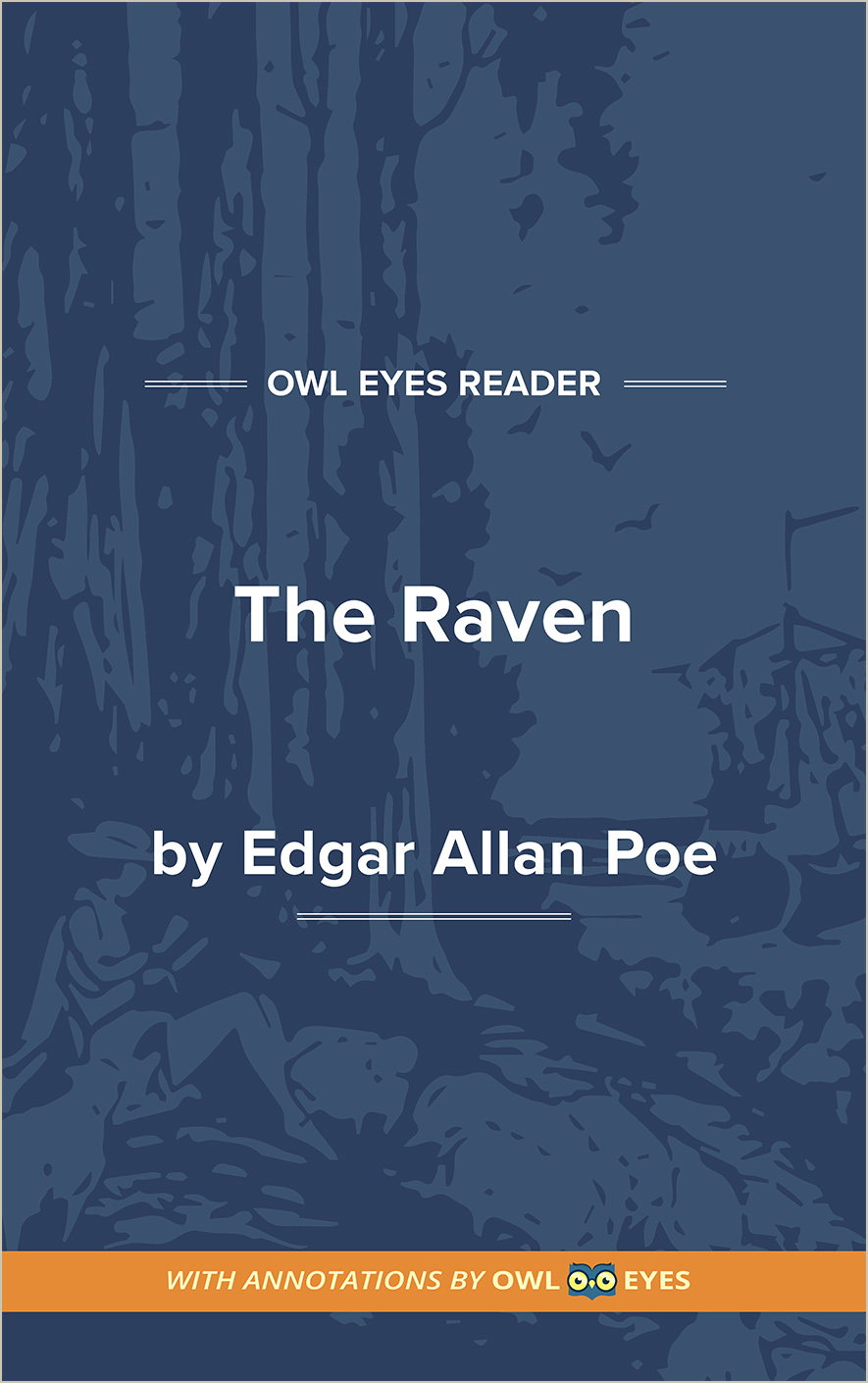Analysis Pages
Symbols in The Raven
Several prominent symbols throughout "The Raven" include the bust of Pallas, the color purple, the light from the narrator's lamp, and the raven itself. The image of the dark raven seated upon the bust of Pallas Athena, carved of pale stone, comes to represent the conflict between emotion and reason at the heart of the poem. The physical hierarchy here—raven above Athena—tells us that the narrator’s grief will override his logical pleading. Two of the poem’s scenic details are conspicuously purple: the curtain and the chair. In both Greco-Roman and Judeo-Christian symbolic systems, purple serves as a mark of class and aristocracy. The lamplight shed by the narrator’s lamp appears in a couple of places in the poem, always as a representation of the harsh truth of Lenore’s death. In the final stanza, the lamplight serves as the catalyst for the poem’s chilling closing image.
Symbols Examples in The Raven:
The Raven
🔒"a stately raven..." See in text (The Raven)
"And the lamplight o'er him streaming throws his shadow on the floor;..." See in text (The Raven)
"lamplight gloating o'er..." See in text (The Raven)
"purple curtain..." See in text (The Raven)
"Perched upon a bust of Pallas..." See in text (The Raven)
"Tempter..." See in text (The Raven)
"dirges..." See in text (The Raven)
"name..." See in text (The Raven)

